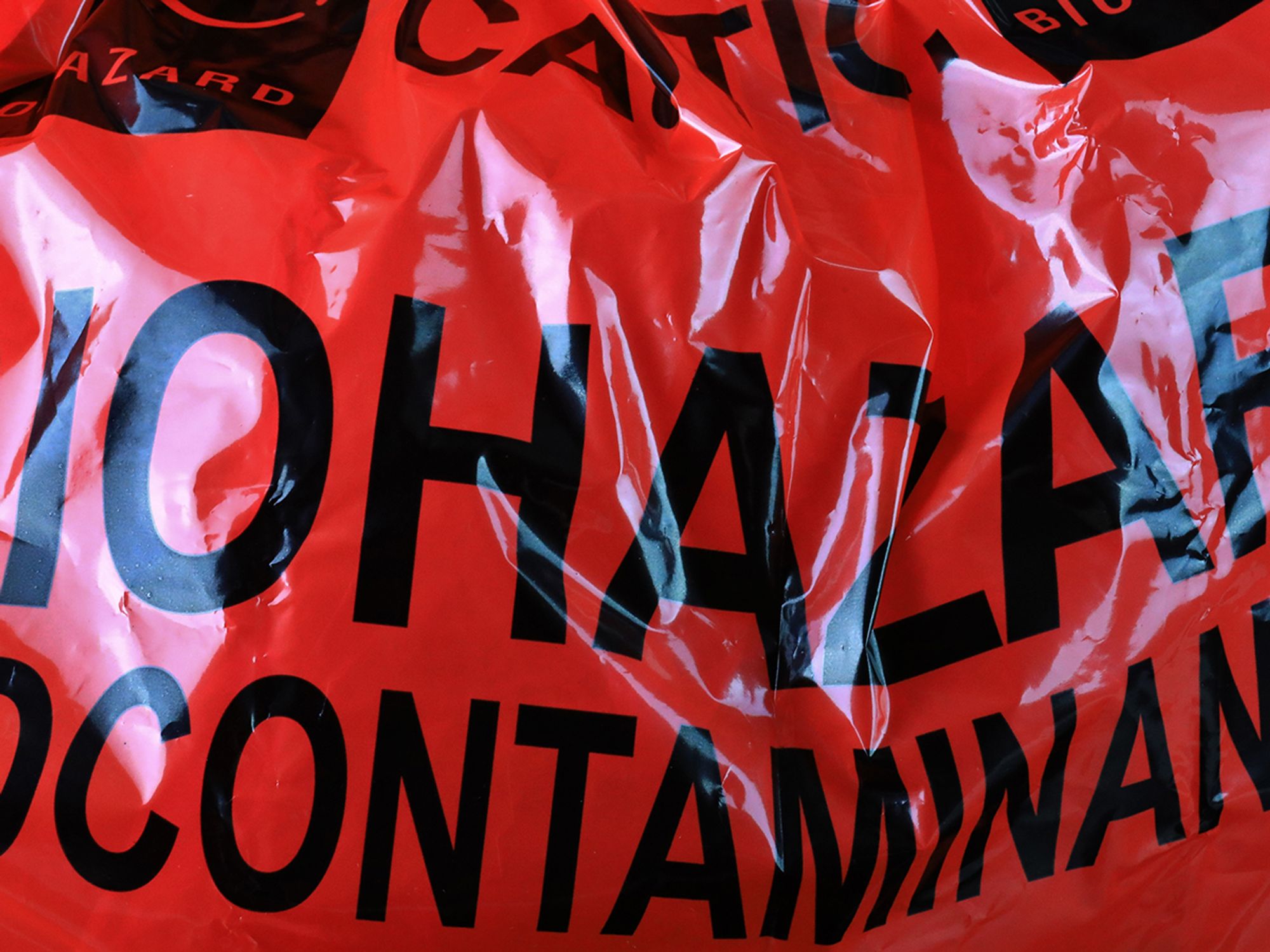Hazards to healthcare workers

- Hazard categories for healthcare include biological, chemical, physical, mechanical/bio-mechanical, and psychological.
- The top events or exposures for healthcare workers in recent years were exposure to harmful substances or environments, overexertion and bodily reaction, and fall on the same level.
- Federal OSHA explains that healthcare workers face a number of serious safety and health hazards such as ergonomic hazards, chemical hazards, slips/trips/falls, and workplace violence.
When someone pictures a healthcare facility, medical staff come to mind. However, healthcare facilities may employ a variety of trades that have health and safety hazards associated with them. These include, but are not limited to, mechanical maintenance, medical equipment maintenance, housekeeping, food service, building and grounds maintenance, laundry, and administrative staff.
Regardless of the occupation, healthcare workers, at large, face recognized, serious hazards. The table below outlines many of the hazard categories associated with healthcare facilities. It gives you the “big picture.”
| Hazard category | Description | Examples found in the healthcare environment |
| Biological | Infectious/biological agents, such as bacteria, viruses, fungi, or parasites, that may be transmitted by contact with infected patients or contaminated body secretions/fluids | Human immunodeficiency virus (HIV), vancomycin resistant enterococcus (VRE), hepatitis B virus, hepatitis C virus, tuberculosis, COVID-19, seasonal/pandemic influenza |
| Chemical | Various forms of chemicals that are potentially toxic or irritating to the body system, including medications, solutions, and gases | Ethylene oxide, formaldehyde, glutaraldehyde, waste anesthetic gases, hazardous drugs like cytotoxic agents, pentamidine, and ribavirin |
| Physical | Agents within the work environment that can cause tissue trauma | Radiation, lasers, noise, electricity, extreme temperatures, and workplace violence |
| Mechanical/ Bio-mechanical | Factors encountered in the work environment that cause incidents, injuries, strain, or discomfort | Tripping hazards, unsafe/unguarded equipment, indoor air quality, slippery floors, confined spaces, cluttered or obstructed work areas/passageways, forceful exertions, awkward postures, localized contact stresses, vibration, temperature extremes, repetitive/prolonged motions or activities, and lifting and moving patients |
| Psychological | Factors and situations that create or increase stress, emotional strain, or interpersonal problems | Stress, workplace violence, shiftwork, inadequate staffing, and heavy workload |
Event and exposure data
Another way to look at hazards is to examine the Bureau of Labor Statistics data on “events or exposures.” Event or exposure signifies the manner in which the injury or illness was produced or inflicted. For ambulatory healthcare services, hospitals, and nursing and residential care facilities, the top three events or exposures that reflect injuries and illnesses with days away from work in 2021 or 2022 were:
- Exposure to harmful substances or environments,
- Overexertion and bodily reaction, and
- Fall on the same level.
It appears that the COVID-19 pandemic may explain the high numbers for “exposures to harmful substances or environments” in 2021 to 2022. Even though the COVID-19 emergency declaration is over, all healthcare facilities run the risk of infection received at or brought to the healthcare facility. For that reason, healthcare workers may be exposed to infectious agents. Protecting healthcare workers is essential to the protection of patients and others from the spread of infection.
Other events or exposures included, but are not limited to:
- Contact with an object or equipment
- Intentional injury by another person
- Struck by an object
- Slips or trips without a fall
- Transportation incidents
- Struck against an object
- Injury by a person (unintentional or intent unknown)
- Fall to a lower level
- Animal- and insect-related incidents
- Fires or explosions
- Caught in an object, equipment, or material
Hazards flagged by federal OSHA
The federal Occupational Safety and Health Administration (OSHA) explains that healthcare workers face a number of serious safety and health hazards. They include:
- Bloodborne pathogens and biological hazards;
- Infectious diseases like tuberculosis, seasonal/pandemic influenza, and avian flu;
- Potential chemical hazards;
- Potential drug exposures;
- Allergic reactions to latex;
- Waste anesthetic gas exposures;
- Laser hazards;
- Radioactive material and x-ray hazards;
- Respiratory hazards;
- Ergonomic hazards from lifting and repetitive tasks;
- Slips, trips, and falls;
- Emergency response hazardous substance and biological agent hazards;
- Noise;
- Compressed gases;
- Electrical hazards;
- Fire hazards;
- Workplace violence.
According to OSHA, some of the potential chemical exposures include formaldehyde, used for preservation of specimens for pathology; ethylene oxide, glutaraldehyde, and peracetic acid used for sterilization; and numerous other chemicals used in healthcare laboratories.
Your workers have a right to report hazards to OSHA, and the agency has a process to respond to worker complaints.
